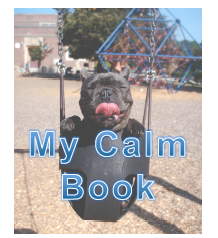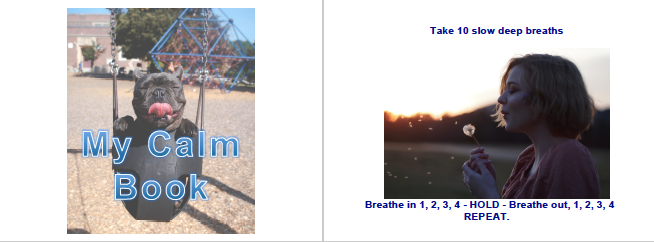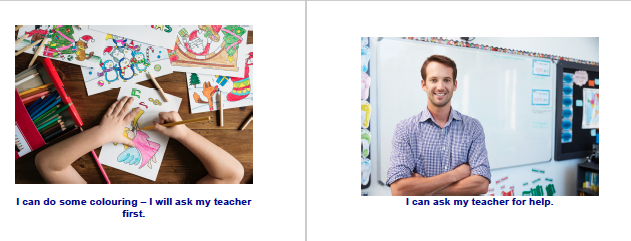
Calm books for the classroom
August 20, 2018
A few years ago, I worked with Toby*, a Year 2 boy with dyslexia who was having trouble controlling his anger in the classroom. When he perceived tasks as too hard he would scrunch up work, throw pens, workbooks and other materials, sometimes yell, swear, and on rare occasions hit and push other students.
Over a couple of sessions, Toby and I worked together to help him regulate his behaviour when he felt angry. He was able to use calming strategies such as deep breathing effectively in sessions with me and at home with assistance from his parents, however he struggled to use them effectively in the classroom especially when his teacher was not present. His teacher had been unwell that term and the class had different relief teachers for more than a third of the term. Toby told me that he found it hard to remember what to do when he became frustrated in class.
 To assist Toby with regulating his behaviours we made a little book of the strategies we’d practised to help him calm down. Toby kept the book in his work tub and used it when necessary. The relief teachers were informed that Toby had a calming book, and if he was looking frustrated they were asked to remind him gently to get out his calming book.
To assist Toby with regulating his behaviours we made a little book of the strategies we’d practised to help him calm down. Toby kept the book in his work tub and used it when necessary. The relief teachers were informed that Toby had a calming book, and if he was looking frustrated they were asked to remind him gently to get out his calming book.
Toby found having a visual reminder of the strategies that help him cool down was really helpful. It also helped that the relief teachers were aware that Toby became angry and agitated when he felt overwhelmed by the work and that he also had strategies he knew how to use to assist him.
Below are some of the ideas that made up Toby’s calming book.

Creating a calming book
These short little books can be made for children who feel anxious, frustrated or angry at school. They are simple to make, and most children enjoy working with their teacher, school counsellor or psychologist to make one. To create one for a child in your class, jot down some ideas of what helps them to feel calm or safe. Typically, the book is about 6-8 pages long, with a strategy and a visual reminder per page.
When creating these book, the strategies need to be personalised to match the child’s needs and the child needs to be completely comfortable with the ideas and content. The strategies also need some practice. The books can be handmade, illustrated and decorated, or created on a computer or tablet. Some ideas are listed below:
- Breathe – 10 deep slow even breaths in and out – breathe in 1, 2, 3, 4 hold. Breathe out 1, 2, 3, 4.
- Slow down and use a sensory technique to help you reconnect mindfully with your body – sip some water, stretch your arms up high, or give yourself a quick hand massage. Reconnect with your body. Focusing on the physical sensation you create rather than the angry sensations can help you to relax.
- Think of something you love or enjoy – a favourite place, a pet or doing something nice with a friend or family member.
- Move your body – go for a short walk to a designated area or run an errand to the office.
- Have some time-out in a break out room, calm down space or reading corner – read a book, colour in, listen to music on headphones.
It can be beneficial to make a copy of the calm book that is small enough to fit into the student’s pocket so it is easily accessible at all times: in the playground, on the way to school, or an excursion, or at home as well as in the classroom. With older students in senior primary and lower secondary school, the calming strategies can be listed on a self-care or calming card which can be laminated and carried by the student in their pocket. If phones are allowed in the classroom the student can take a screenshot of their calm card so they can use it when they need.
You can download an example of a calm book here.
Zoe Ganim, Psych4Schools Psychologist
* The details of this story have been changed to protect the child, teacher and school’s identity. Toby is not his real name.